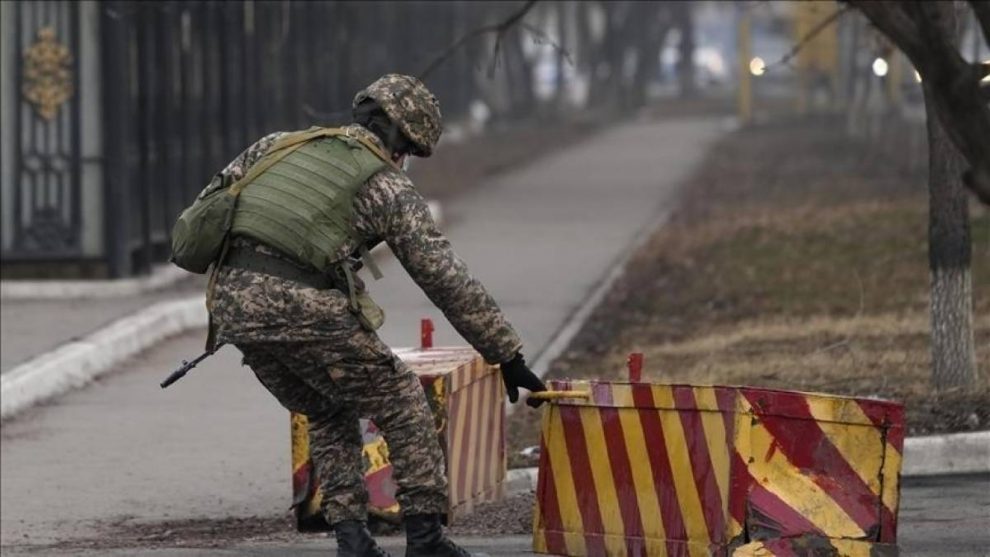The death toll from the flare-up in violence along the Kyrgyz-Tajik border has risen to near 100 as a tense cease-fire and joint patrols of the two Central Asian nations’ forces were put in place amid scattered gunfire and shelling.
Kyrgyz authorities on September 18 said 59 of its citizens had been killed after days of shooting along the border with Tajikistan.
Meanwhile, Tajikistan said at least 35 on its side had been killed, while unnamed officials told RFE/RL’s Tajik Service that at least 39 Tajik citizens had died in the violence.
Civilians, including women and children, were reported to be among the dead and injured, along with security personnel. The reports could not be independently verified.
The Kyrgyz Health Ministry said on September 18 that 12 more bodies had been recovered from the Batken region, the worst-hit location in Kyrgyzstan.
Multiple cease-fires have been agreed upon by both sides, with each accusing the other of breaching the truces.
Kyrgyzstan’s national security committee said that as of 10 p.m. on September 18, the situation on the border was “tense” but calm and “appearing to stabilize.”
A statement said that under a newly reached agreement, “additional forces and means are being withdrawn from the state border line to places of permanent deployment.”
“Law enforcement agencies of the two republics are monitoring public order in the border areas and conduct joint patrols” along border highways, the statement said.
The spasm of violence between the Central Asian neighbors is the worst since at least 2021, when two dozen people were killed and at least 150 wounded on both sides.
Hours after a cease-fire took effect on September 17, both sides reported that several border villages had been hit by new shelling.
Tajik authorities accused Kyrgyz forces of using Grad multiple-rocket launch systems from the Osh region to target a rural community in the Lakhsh district on September 17.
Tajik officials said four people had been injured and three houses had been destroyed.
The cause of the latest violence wasn’t immediately clear.
Long-standing tensions in Central Asia, particularly in the fertile Ferghana Valley, stem in part from Soviet-era borders that artificially divided ethnic groups and communities.
Access to water is also increasingly driving tensions. Central Asian nations compete for water for agriculture, electricity generation, as well as drinking, and prolonged drought and climate change have started to make it more scarce across the region.
Earlier in the week, the Kyrgyz border guard service accused Tajik forces of using tanks, armored personnel carriers, and mortars. Tajikistan, in turn, accused Kyrgyz forces of bombarding an outpost and seven villages with “heavy weaponry” and also accused them of using combat helicopters and drones.
Both countries host Russian military bases, but Moscow has played a minimal role in the latest outbreak of fighting. Russian officials on September 16 called again for a halt in the clashes, and on September 18, Russian President Vladimir Putin called the presidents of both countries.
Putin “called on the parties to prevent further escalation and take measures to resolve the situation as soon as possible by exclusively peaceful, political, and diplomatic means,” the Kremlin said in a statement.
More than 140,000 people have been evacuated from the Batken area, Kyrgyzstan’s Emergencies Ministry said.
In the Kyrgyz capital, Bishkek, and in other cities, volunteers were gathering humanitarian aid and donating blood for people affected by the clashes.
Meanwhile, the International Committee of the Red Cross said in a September 17 statement that it was concerned about the upsurge of military activities along the border and its humanitarian consequences.
Source : Radio Free Europe















